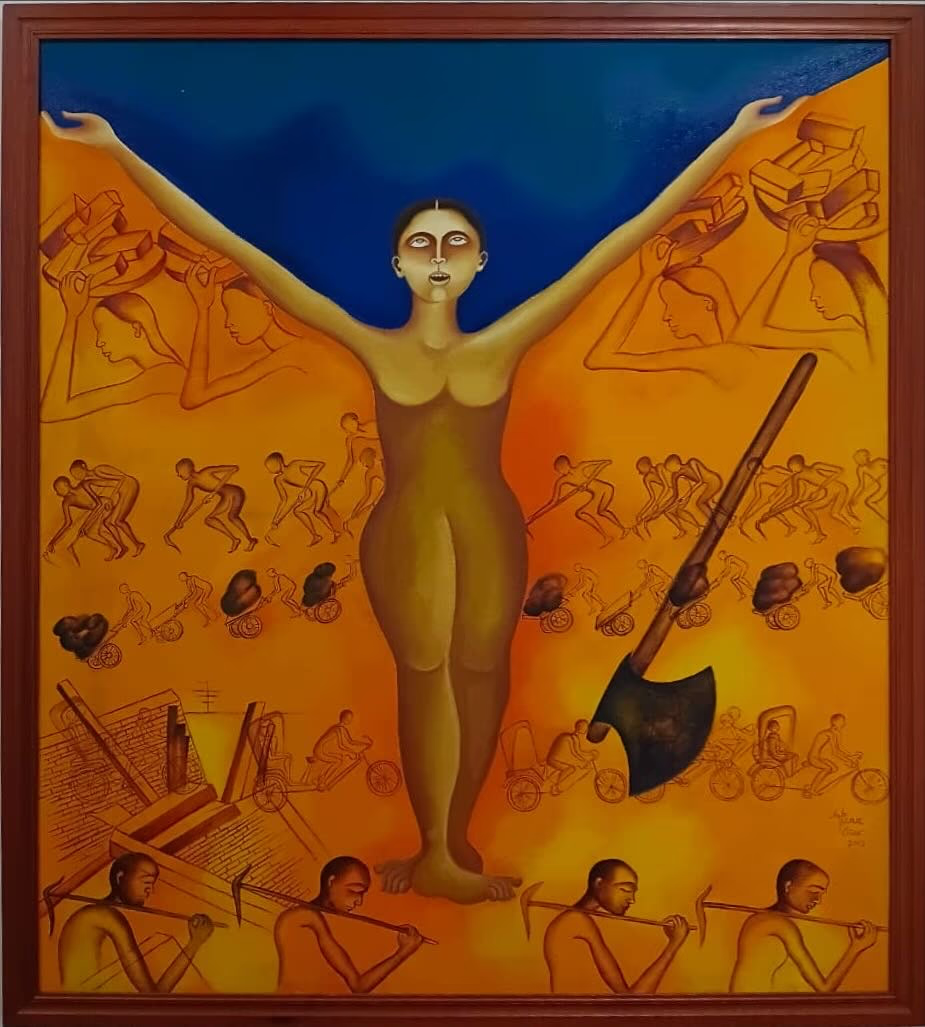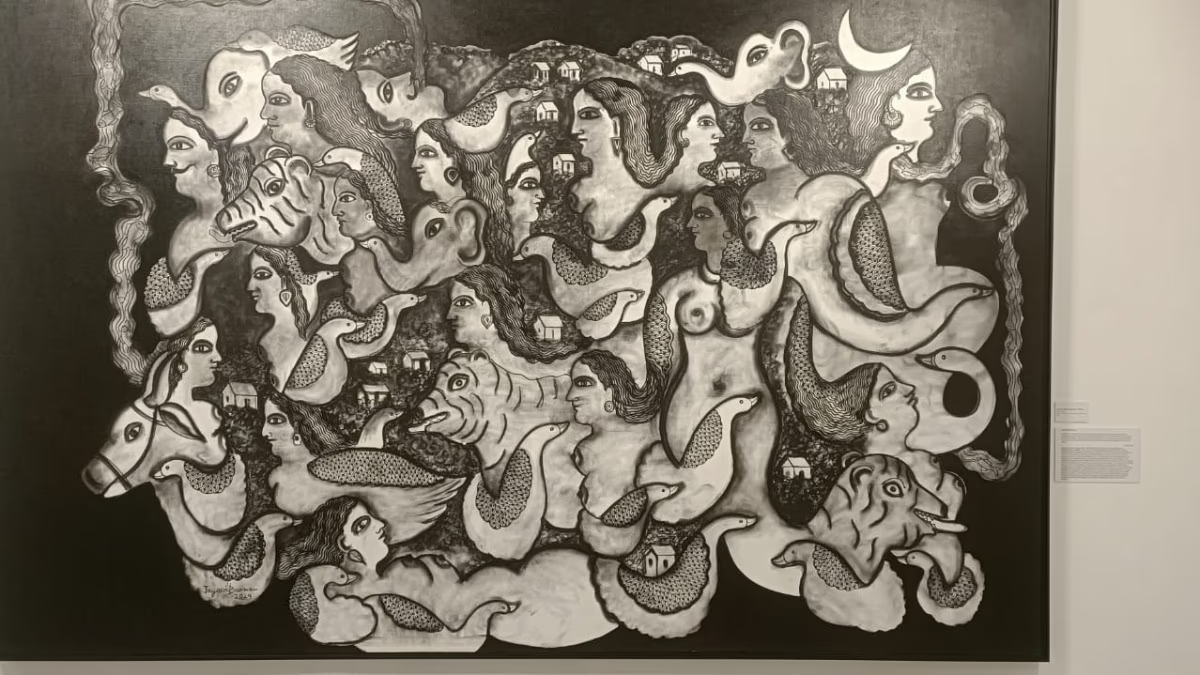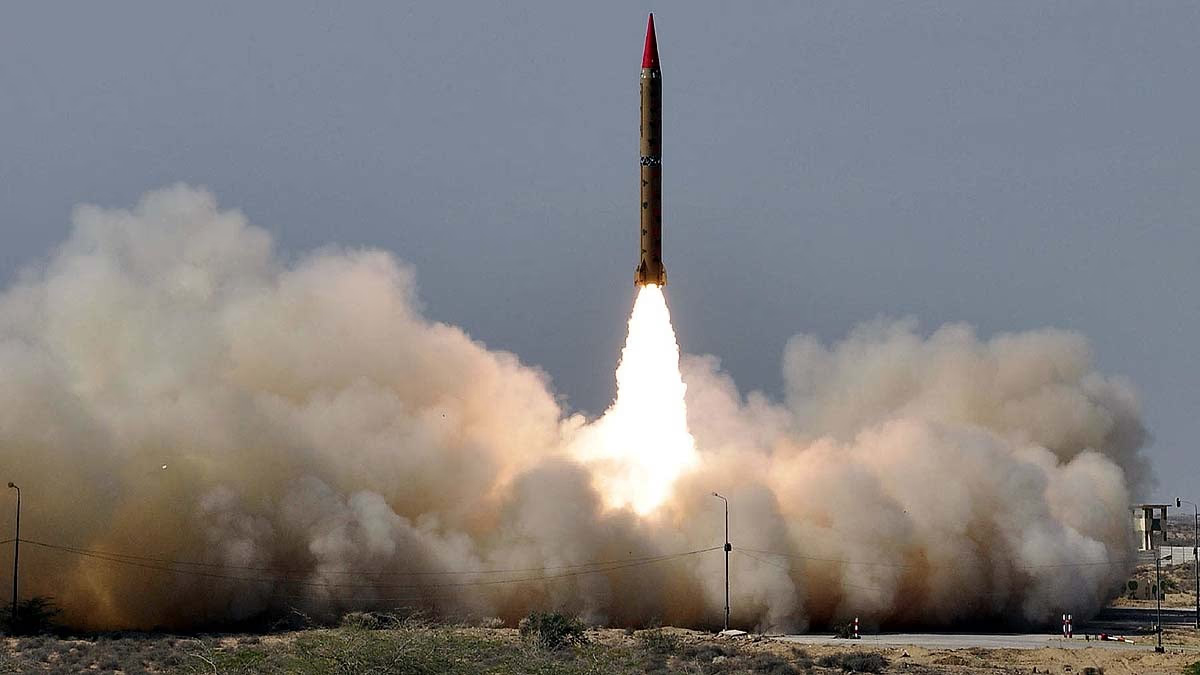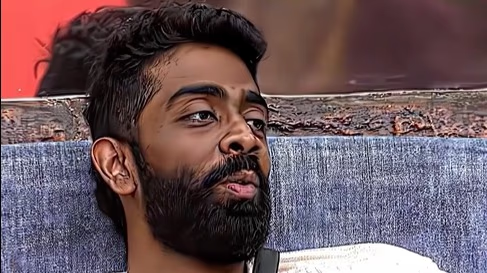Recently, the Indian women's cricket team not only claimed the World Cup title, capturing global recognition, but they also redefined cricket as a gender-neutral sport. This victory wasn't achieved overnight. It is the culmination of centuries of perseverance, decades of anticipation, and a prolonged saga of continuous struggle. This struggle has been expressed in many forms over time, with the brush and canvas being one of them.
Images of Women's Struggle on Display
At the India International Centre (IIC) in New Delhi, this struggle finds expression on the walls. Lifesize canvases narrate a unique story, filled with colors of hope, and when you observe them, they seem to whisper the dreams woven by women, entwined with narratives of freedom.
Art Exhibition at IIC
The revered walls of the Kamala Devi Complex at IIC are adorned with artistic depictions of these centuries' worth of struggles, painting a perpetual tale until November 9. Those interested in the language of art have a ripe opportunity to explore 'Weaving Water: Feminine Countercultures in Paint and Print'.

Source: aajtak
A New Outlook in Indian Art
This exhibition offers a distinct experience apart from traditional showcases, highlighting societal challenges faced by women via artistic mediums. Curated by the celebrated art expert Jyoti A. Kathpalia, it draws inspiration from Padma Shri Ajit Kaur's autobiography 'Weaving Water'. The narrative encapsulates pains, experiences, and the intricate emotions of the female psyche, beautifully transformed into art by 15 renowned female artists. Their work creates a symphony of literature, art, and feminine experience, proposing a groundbreaking perspective in Indian art history.
The core concept of this exhibition revolves around two symbols: 'Water' and 'Weaving'. 'Water' represents flow, memory, and identity, while 'Weaving' signifies patterns of life, repetition, and ongoing creation. Through these symbols, the artists have turned the continuity and sensitivity of women's lives into a captivating medium.
Giving Shape to the Echoes of Ajit Kaur's Autobiography
The artists have extracted voices of femininity, confessions, and resistance from Ajit Kaur's autobiography, transforming personal agony into a collective narrative. These pieces capture the vivid writing of domestic histories, expertly turning private experiences into public dialogue, the essence of this exhibition—a transformation of personal experiences into societal expressions.
Exhibition of Works by 15 Prominent Female Artists
The exhibition includes works from 15 distinguished Indian female artists, notably Anupam Sood, Gogi Saroj Pal, Jayashree Burman, and Arpana Caur, among others. Arpana Caur, not only an internationally acclaimed painter but also Ajit Kaur's daughter, beautifully captures her mother's life and struggles. Curator Jyoti A. Kathpalia has intricately woven this exhibition to allow the artworks of both veteran and contemporary artists to converse with one another. Here, visitors can admire a blend of oil, acrylic, charcoal, silkscreen, etching, mixed media installation, and sculpture, enriching this exhibition.

Source: aajtak
'Weaving Water' marks a brave initiative in the Indian art scene, uniting literature and visual art, bridging their powerful mediums on one stage. It challenges the notion of women's art, traditionally confined to 'women's exhibitions', by integrating women's experiences into mainstream society and politics.
Art That Defines the Essence of Waiting
Ajit Kaur's autobiography, formerly known only in limited linguistic circles, now becomes part of a broader cultural discourse. It extends her literary impact and offers a platform to recount the historical saga of women's struggles to a new generation. 'Weaving Water' presents the contention that real change begins when silence is broken—not just relying on laws, since laws can assist only when aid is sought vocally. This magnificent series of paintings evolves from the unspoken to the expressed, subtly gesturing towards salvation—liberation that is genuine and natural, filled with transformative anticipation.




